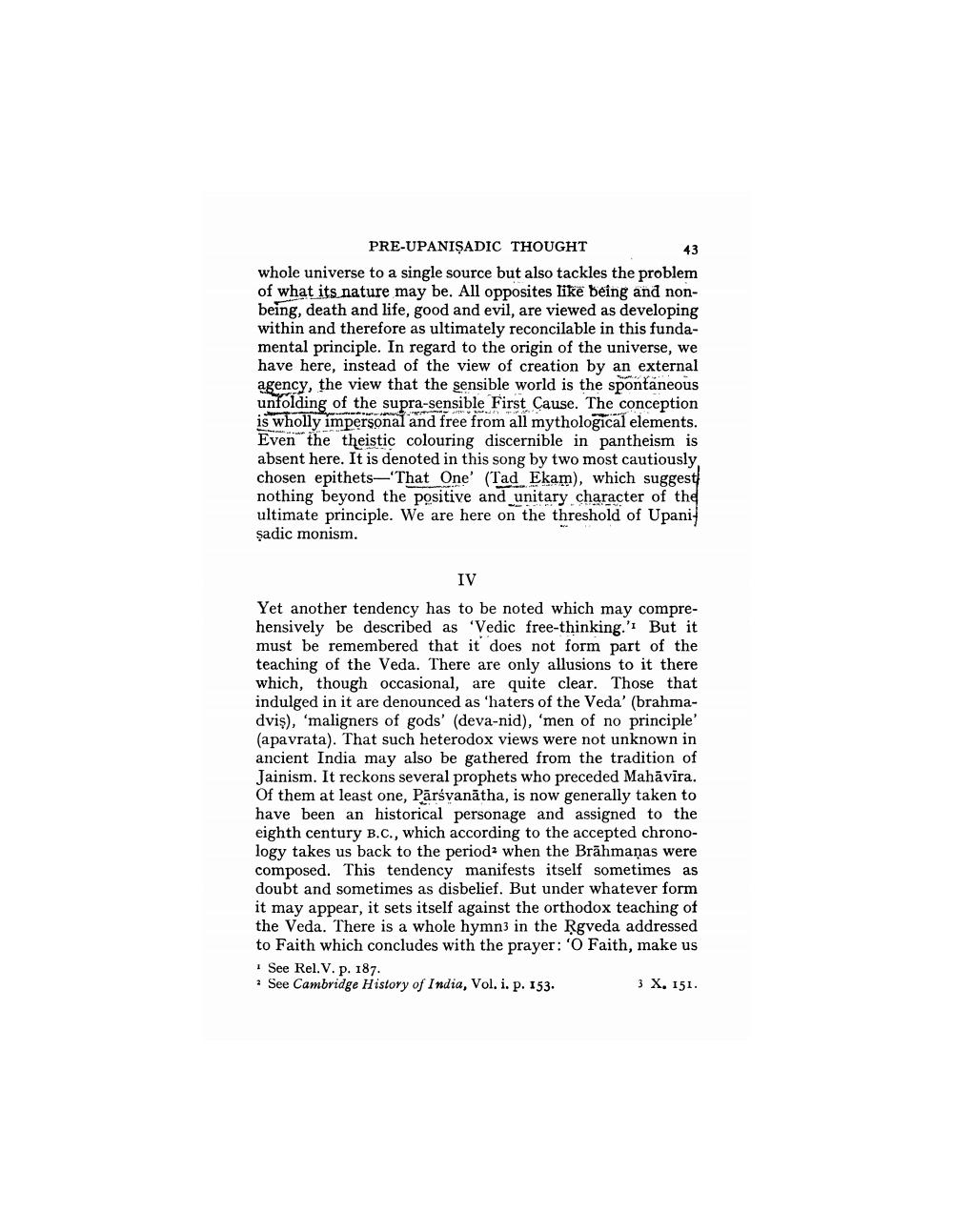________________
PRE-UPANIŞADIC THOUGHT
43 whole universe to a single source but also tackles the problem of what its nature may be. All opposites like being and nonbeing, death and life, good and evil, are viewed as developing within and therefore as ultimately reconcilable in this fundamental principle. In regard to the origin of the universe, we have here, instead of the view of creation by an external agency, the view that the sensible world is the spontaneous unfolding of the supra-sensible First Cause. The conception is wholly impersonal and free from all mythological elements. Even the theistic colouring discernible in pantheism is absent here. It is denoted in this song by two most cautiously. chosen epithets-'That One' (Tad Ekam), which suggest nothing beyond the positive and unitary character of the ultimate principle. We are here on the threshold of Upani şadic monism.
IV
Yet another tendency has to be noted which may comprehensively be described as "Vedic free-thinking.' But it must be remembered that it does not form part of the teaching of the Veda. There are only allusions to it there which, though occasional, are quite clear. Those that indulged in it are denounced as 'haters of the Veda' (brahmadvis), 'maligners of gods' (deva-nid), 'men of no principle' (apavrata). That such heterodox views were not unknown in ancient India may also be gathered from the tradition of Jainism. It reckons several prophets who preceded Mahāvira. Of them at least one, Pārsvanātha, is now generally taken to have been an historical personage and assigned to the eighth century B.C., which according to the accepted chronology takes us back to the period when the Brāhmaṇas were composed. This tendency manifests itself sometimes as doubt and sometimes as disbelief. But under whatever form it may appear, it sets itself against the orthodox teaching of the Veda. There is a whole hymns in the Rgveda addressed to Faith which concludes with the prayer: 'O Faith, make us
See Rel. V. p. 187. * See Cambridge History of India, Vol. i. p. 153.
3 X, 151.




